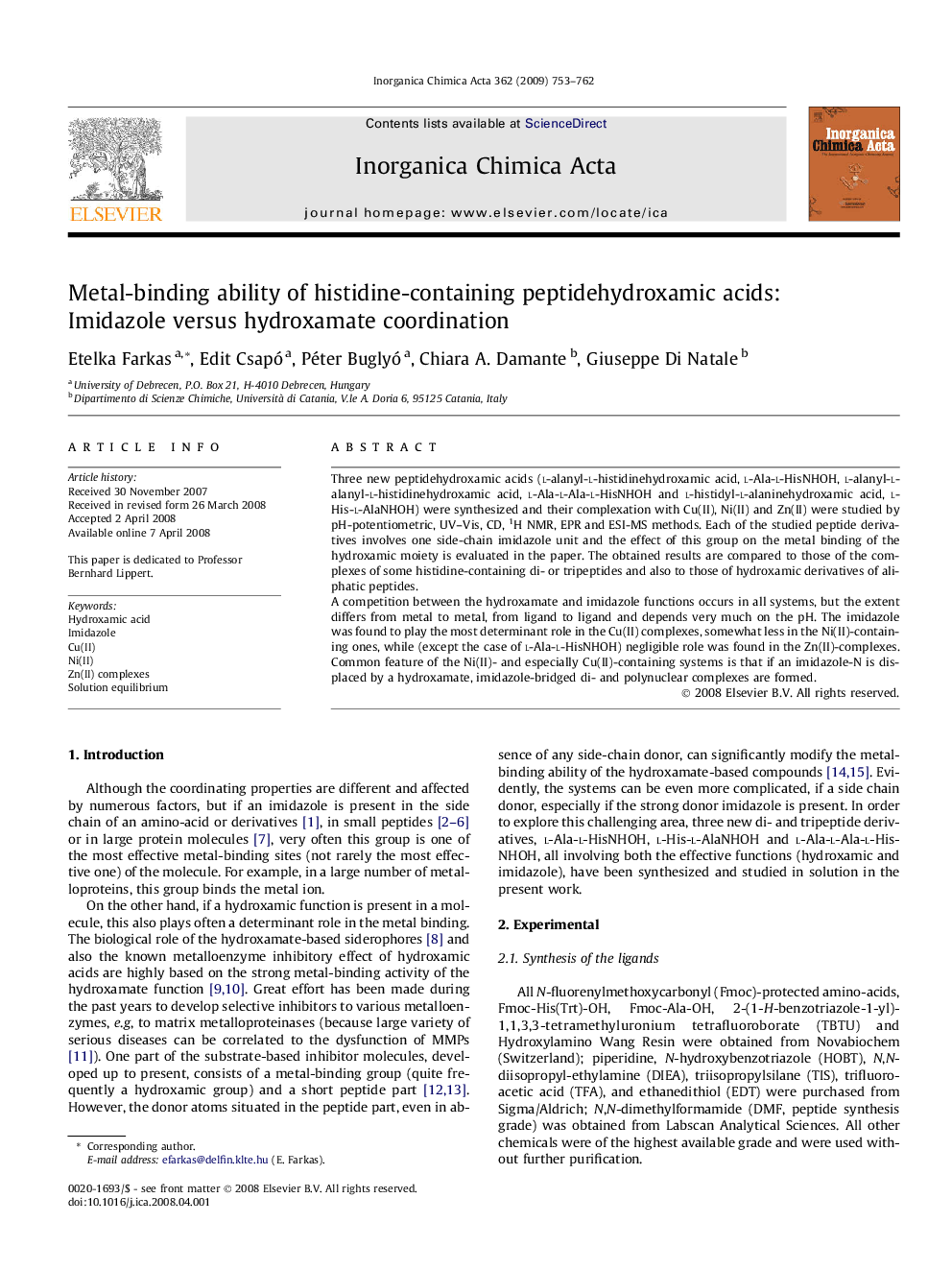| کد مقاله | کد نشریه | سال انتشار | مقاله انگلیسی | نسخه تمام متن |
|---|---|---|---|---|
| 1308826 | 975186 | 2009 | 10 صفحه PDF | دانلود رایگان |

Three new peptidehydroxamic acids (l-alanyl-l-histidinehydroxamic acid, l-Ala-l-HisNHOH, l-alanyl-l-alanyl-l-histidinehydroxamic acid, l-Ala-l-Ala-l-HisNHOH and l-histidyl-l-alaninehydroxamic acid, l-His-l-AlaNHOH) were synthesized and their complexation with Cu(II), Ni(II) and Zn(II) were studied by pH-potentiometric, UV–Vis, CD, 1H NMR, EPR and ESI-MS methods. Each of the studied peptide derivatives involves one side-chain imidazole unit and the effect of this group on the metal binding of the hydroxamic moiety is evaluated in the paper. The obtained results are compared to those of the complexes of some histidine-containing di- or tripeptides and also to those of hydroxamic derivatives of aliphatic peptides.A competition between the hydroxamate and imidazole functions occurs in all systems, but the extent differs from metal to metal, from ligand to ligand and depends very much on the pH. The imidazole was found to play the most determinant role in the Cu(II) complexes, somewhat less in the Ni(II)-containing ones, while (except the case of l-Ala-l-HisNHOH) negligible role was found in the Zn(II)-complexes. Common feature of the Ni(II)- and especially Cu(II)-containing systems is that if an imidazole-N is displaced by a hydroxamate, imidazole-bridged di- and polynuclear complexes are formed.
Three new peptidehydroxamic acids (l-alanyl-l-histidinehydroxamic acid, l-Ala-l-HisNHOH, l-alanyl-l-alanyl-l-histidinehydroxamic acid, l-Ala-l-Ala-l-HisNHOH and l-histidyl-l-alaninehydroxamic acid, l-His-l-AlaNHOH) were synthesized and their complexation with Cu(II), Ni(II) and Zn(II) was studied by pH-potentiometric, UV–Vis, CD, 1H NMR, EPR and ESI-MS methods.Figure optionsDownload as PowerPoint slide
Journal: Inorganica Chimica Acta - Volume 362, Issue 3, 20 February 2009, Pages 753–762